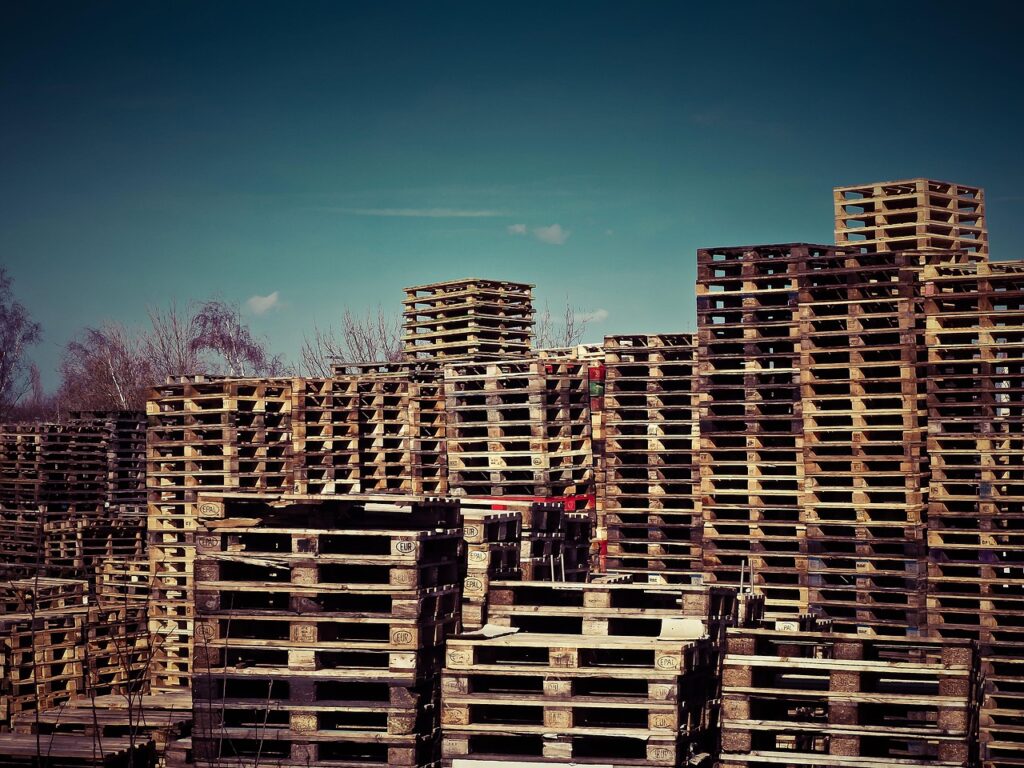Buying pallets is a straightforward process, but choosing the right type depends on the intended use. When searching for pallets buy options, it’s important to identify whether you need new, used, or custom pallets to match your specific requirements for durability and cost. This decision impacts both budget and efficiency in handling or shipping goods.
Many businesses and individuals buy pallets for shipping, storage, or even DIY projects. Knowing where to buy pallets—whether from manufacturers, wholesalers, or local suppliers—can save time and money. Understanding these options helps buyers make informed decisions without unnecessary complications.
How to Buy Pallets
Buying pallets requires understanding types, finding reliable sources, and checking quality carefully. Each stage affects cost, durability, and suitability for specific uses.
Choosing the Right Pallet Type
Selecting a pallet starts with knowing its purpose. Wood pallets are common, affordable, and repairable but vary in quality. Plastic pallets resist moisture and chemicals, ideal for hygiene-sensitive environments, though more expensive.
Metal pallets offer heavy-duty strength but are costly and heavier. Consider size and load capacity carefully; standard pallets are usually 48″x40″, but custom sizes exist.
The environment where pallets will be used matters. For export, heat-treated pallets meeting ISPM 15 standards are necessary to prevent pests.
Sourcing Suppliers and Platforms
Reliable suppliers include local pallet manufacturers, pallet recyclers, and major distributors. Buying direct often provides better prices and fresher inventory.
Online marketplaces like Alibaba, Uline, or PalletOne offer a wide range with reviews and ratings. Regional pallet brokers can also source specific types quickly.
Request samples or visit suppliers if possible. Check delivery terms, bulk discounts, and return policies before committing.
Evaluating Quality and Specifications
Inspect pallets for structural integrity, including boards, blocks, and stringers. Check for cracks, splinters, and loose nails.
Verify weight capacity against your load requirements. Understand pallet grades: Grade A indicates new, high-quality pallets, while Grade B or C might be used with visible wear.
Confirm treatments like kiln-drying or heat-treating if shipment regulations apply. Documentation or certification should accompany pallets for exports.
Ask for detailed specs and consider weight, durability, and handling compatibility before purchasing.
Factors to Consider When Purchasing Pallets
Choosing the right pallets involves evaluating their condition, cost advantages, and delivery logistics. Buyers must balance quality needs with budget constraints and ensure the pallet supplier can handle transportation efficiently.
Comparing New vs. Used Pallets
New pallets offer uniform strength and appearance, which is critical for industries with strict hygiene or safety standards. They typically last longer but come at a higher price. Used pallets are cost-effective and good for non-sensitive goods but vary in durability and may require inspection to avoid damage.
Choosing between them depends on end-use. New pallets suit food, pharmaceuticals, or export, while used pallets fit local shipping and storage. Buyers should check for signs of wear, repairs, or contamination on used pallets.
Pricing and Bulk Discounts
Prices vary widely depending on pallet material, size, and condition. Wooden pallets generally cost less than plastic or metal alternatives. Bulk purchases often lead to significant discounts, sometimes 10-20% off standard unit prices.
Buyers should request quotes from several suppliers and compare the total cost, including any fees for customization or treatment. Understanding volume pricing tiers can reduce expenses, especially for large ongoing orders.
Logistics and Delivery Options
Delivery costs heavily impact total pallet expenses. Suppliers closer to the buyer reduce shipping time and fees. Common methods include flatbed trucks and pallet shipping containers suited for bulk orders.
Some suppliers offer free delivery beyond a minimum order size. It is essential to verify lead times and pallet stacking practices to avoid damage in transit. Coordinating delivery schedules with warehouse capacity avoids bottlenecks.


